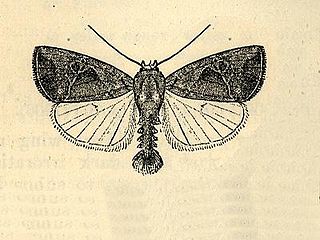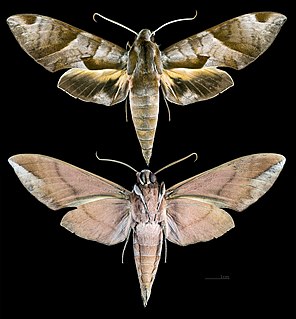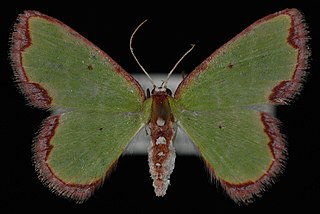 W
WElaphria basistigma is a moth of the family Noctuidae. It is found on the West Indies.
 W
WElaphria nucicolora, the sugarcane midget, is a moth of the family Noctuidae. The species was first described by Achille Guenée in 1852. It is found from the south-eastern United States, through Guadeloupe, Jamaica and Puerto Rico to tropical South America. It is also present on the Hawaiian islands of Oahu, Maui and Hawaii.
 W
WEumorpha obliquus is a moth of the family Sphingidae. It is found from Belize, Guatemala, Nicaragua and Costa Rica south to Bolivia. It is also present in Brazil and Guadeloupe.
 W
WHellinsia devriesi is a moth of the family Pterophoridae. It is found on the Galapagos Islands and Guadeloupe.
 W
WHepalastis pumilio is a moth of the family Pterophoridae. It has worldwide tropical distribution, including Argentina, Brazil, Colombia, Costa Rica, Cuba, Ecuador, Guadeloupe, Jamaica, Mexico, Puerto Rico, Suriname, Japan, Micronesia, South Africa the Virgin Islands as well as Queensland and New Guinea.
 W
WHyblaea puera, the teak defoliator, is a moth native to south-east Asia. It was first described by Pieter Cramer in 1777. The species has also been recently reported to be present in Central America and Africa. The caterpillar feeds on teak and other trees. It is considered to be one of the major teak pests around the world.
 W
WSynchlora cupedinaria is a moth in the family Geometridae first described by Augustus Radcliffe Grote in 1880. It is found in Florida, the Bahamas, the Virgin Islands, Guadeloupe, Martinique and possibly St. Kitts and Puerto Rico.